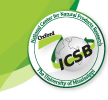Document Type
Oral Presentation
Location
Oxford Convention Center, 102 Ed Perry Boulevard Oxford, MS 38655
Event Website
https://oxfordicsb.org/
Start Date
15-4-2024 1:30 PM
End Date
15-4-2024 1:45 PM
Description
Botanicals are complex mixtures that present unique analytical challenges. A multi-detector chromatographic approach can provide accurate, constituent-based data to ensure proper identification and quantification of botanicals. These data are often used to help drive in silico safety assessments to identify suspected toxicants and assess the potential for deleterious effects using structure activity relationships. To showcase this approach, ashwagandha extracts were characterized to determine authenticity and to guide the necessary toxicological studies. To ensure the full constituency of the extracts are evaluated, a multi-detector system (UHPLC-PDA-CAD-HRMS) was employed and subjected to a comprehensive chemical constituent identification (CCID) process. All of the constituents above a threshold of toxicological concern (TTC) were quantified and identified. Identification was performed using HRMS and comparing fragmentation data to standards, literature, and/or online databases. These identifications were used to provide data for an in silico safety assessment. These data guide or obviate the need for classical in vitro and in vivo safety studies.
Recommended Citation
Sica, Vincent, "Characterization of Ashwagandha Using a Multi-Detector Approach" (2024). Oxford ICSB. 5.
https://egrove.olemiss.edu/icsb/2024_ICSB/Schedule/5
Publication Date
April 2024
Accessibility Status
Searchable text
Included in
Characterization of Ashwagandha Using a Multi-Detector Approach
Oxford Convention Center, 102 Ed Perry Boulevard Oxford, MS 38655
Botanicals are complex mixtures that present unique analytical challenges. A multi-detector chromatographic approach can provide accurate, constituent-based data to ensure proper identification and quantification of botanicals. These data are often used to help drive in silico safety assessments to identify suspected toxicants and assess the potential for deleterious effects using structure activity relationships. To showcase this approach, ashwagandha extracts were characterized to determine authenticity and to guide the necessary toxicological studies. To ensure the full constituency of the extracts are evaluated, a multi-detector system (UHPLC-PDA-CAD-HRMS) was employed and subjected to a comprehensive chemical constituent identification (CCID) process. All of the constituents above a threshold of toxicological concern (TTC) were quantified and identified. Identification was performed using HRMS and comparing fragmentation data to standards, literature, and/or online databases. These identifications were used to provide data for an in silico safety assessment. These data guide or obviate the need for classical in vitro and in vivo safety studies.
https://egrove.olemiss.edu/icsb/2024_ICSB/Schedule/5


